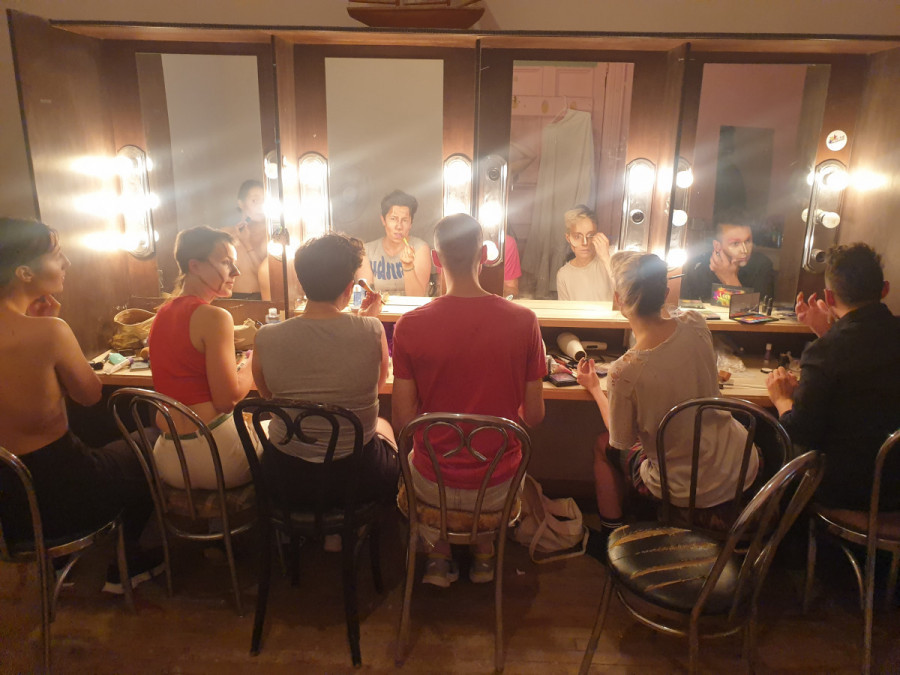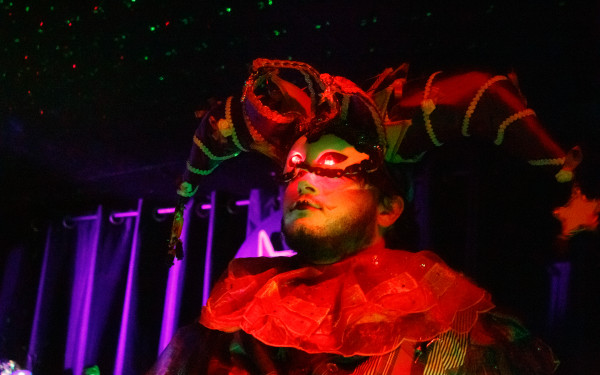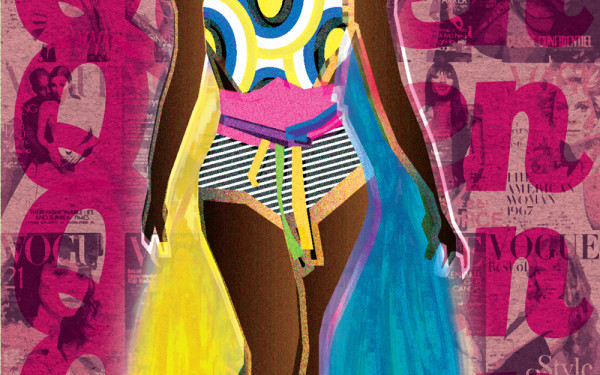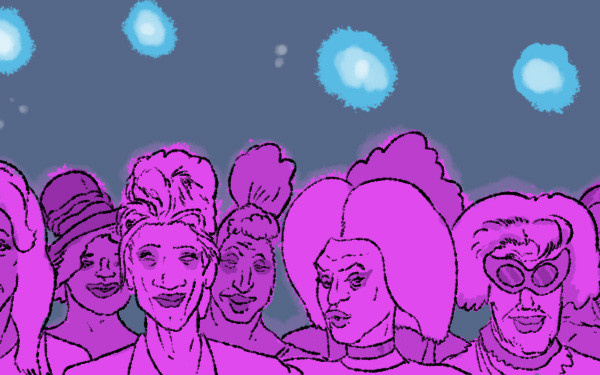Questioning Gender Through Performance: The Art of Dragqueer
Workshop invites drag performers to blur the binary between kings and queens
Ander Gates, a clown and drag performer, taught an introductory class from April to June where, over the course of eight weeks, he encouraged students to create a drag persona.
Through their characters, each student invented and practiced a performance which were then performed during a show at Café Cléopâtre on June 13.
Gates encouraged participants to shift away from the more habitual drag art of ‘queens’ and ‘kings’ to the concept of ‘drag queer.’ This concept explores the space between genders, intertwining masculine and feminine stereotypes and aesthetics to create something new beyond the male/female binary.
Gates’ workshop allowed students to experience drag costumes, performances, and movements they did not did not normally have access to.
Participant Corinne, who performed under the drag name Anarcoco, explained that creating alongside other artists allowed her to step out of her comfort zone.
She added that, in a space where gender norms were abolished, she was able to discover and set free parts of herself that she didn't know existed, thus creating a sort of extravagant extension of herself through her character.
“At the beginning, I was afraid of what [doing drag] would reveal about my own gender identity, but gender is quite a vague concept, so I thought that I might as well deconstruct it in my own body, in my own movement and creativity,” she said.
Adèle Raux-Copin, who performs under the drag name Rocco Pop, said the experience allowed her to explore a more flamboyant and confident side of her personality not expressed in her day-to-day life.
“I think it was about connecting with a part of me that's a little more fiery, more into performance, more flamboyant and masculine,” she said.
Mathilde Benignus explored similar ideas of masculinity through her drag character Captain Tender. Benignus explained that Tender is an archetypal womanizing captain and yet, when he appears on stage wearing a tutu and delivers a dance that is both tender and flirty, he becomes a fragile man with an awkward romantic potential.
Victor-riha, Jonathan Thibodeau-Lacasse’s drag persona also blends gender norms together through ‘queerlesque’ performances, burlesque that blends the masculine and feminine. During the group’s show at Café Cléopatre, for instance, she sported very feminine clothes accompanied by a mustache.
For Thibodeau-Lacasse, drag is a way of deconstructing gender and expressing the way queer people differ from societal norms. “The stage offers us a space to allow ourselves to exist, to be seen in that uniqueness,” he said.
According to Benignus, the very idea of drag is tightly linked to performance art. She said key ideas are generated when artists connect with the public, and that people on both sides of the stage try to create meaning from performances.
Thibodeau-Lacasse added that for the group, there was an intrinsic search for meaning in each performance. For some, this meant being vulnerable in front of audiences and other performers. For others it was about exploring their gender identity or the concept of gender all together.
For Benignus, performing as a masculine figure is also a way to bring forth change by inviting not only LGBTQIA2S+ people, but also cisgender and straight people to question norms and imagine a more emancipated future. “To straight cisgender people who want to question this I tell them: Instead of looking within others, try out drag, look within yourself and work on your gender in joy.”


_600_832_s.png)




